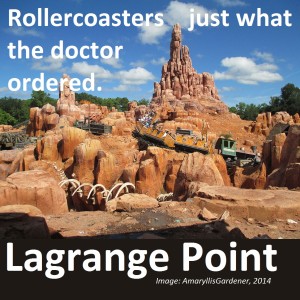
It's Ignobel Prize 2018 time. As part of Improbable Research's celebration of curious and comedic science, we find out the rollercoasters, and how they are just what the doctor ordered. The Ignobel Prize 2018 in Medicine went to Mitchel and Wartinger for their ground breaking work into how to use rollercoasters to treat Kidney stones. We look into how rollercoasters work, their impact on the body, and how it can help pass kidney stones. Plus we look at some research into how rollercoaster g-force can impact your brain.
References:
- Marc A. Mitchell, David D. Wartinger. Validation of a Functional Pyelocalyceal Renal Model for the Evaluation of Renal Calculi Passage While Riding a Roller Coaster. The Journal of the American Osteopathic Association, 2016; 116 (10): 647 DOI: 10.7556/jaoa.2016.128
- ROLLER COASTER PHYSICS & G FORCES - COASTERFORCE. (2018). Retrieved from http://coasterforce.com/physics/
- DeHart, Roy L. (2002). Fundamentals of Aerospace Medicine: 3rd Edition. Lippincott Williams & Wilkins.
- "NASA Physiological Acceleration Systems". Web.archive.org. 2008-05-20. Archived from the original on 2008-05-20. Retrieved 2012-12-25.
- NASA Technical note D-337, Centrifuge Study of Pilot Tolerance to Acceleration and the Effects of Acceleration on Pilot Performance, by Brent Y. Creer, Captain Harald A. Smedal, USN (MC), and Rodney C. Vtlfngrove, figure 10
- NASA Technical note D-337, Centrifuge Study of Pilot Tolerance to Acceleration and the Effects of Acceleration on Pilot Performance, by Brent Y. Creer, Captain Harald A. Smedal, USN (MC), and Rodney C. Vtlfngrove
- Kuo, Calvin & Wu, Lyndia & P Ye, Patrick & Laksari, Kaveh & Benjamin Camarillo, David & Kuhl, Ellen. (2017). Pilot Findings of Brain Displacements and Deformations During Roller Coaster Rides. Journal of neurotrauma. 34. 10.1089/neu.2016.4893.
More Episodes
Episode 278 - Lasers combs for wifi and detecting smells
 2018-06-11
2018-06-11
 77
77
 2018-06-11
2018-06-11
 77
77
Episode 276 - Hunting for gamma rays
 2018-05-28
2018-05-28
 78
78
 2018-05-28
2018-05-28
 78
78
Episode 261 - Stopping unwanted Life on Mars
 2018-02-13
2018-02-13
 30
30
 2018-02-13
2018-02-13
 30
30
012345678910111213141516171819
Create your
podcast in
minutes
- Full-featured podcast site
- Unlimited storage and bandwidth
- Comprehensive podcast stats
- Distribute to Apple Podcasts, Spotify, and more
- Make money with your podcast
It is Free
- Privacy Policy
- Cookie Policy
- Terms of Use
- Consent Preferences
- Copyright © 2015-2024 Podbean.com






